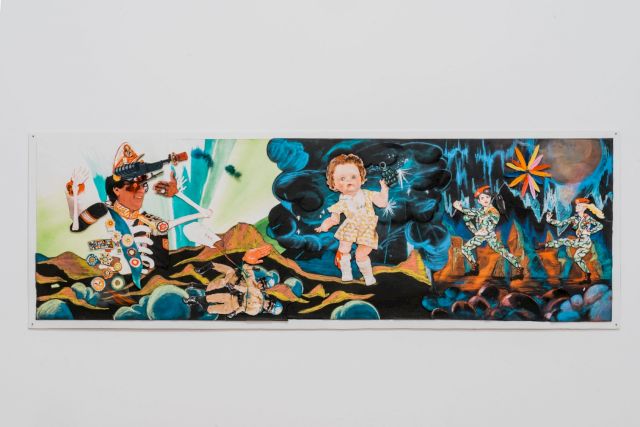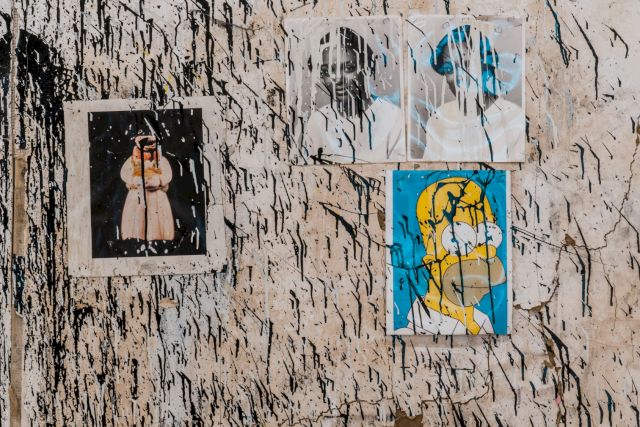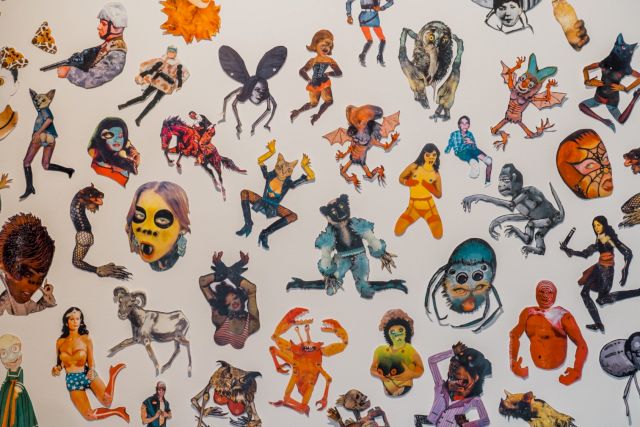Independent Collectors
Thru the Mirror
Collection de Bruin-Heijn presents the exhibition "Thru the Mirror" at Quetzal Art Center

In the exhibition Thru the Mirror at Quetzal Art Center works by Özgür Kar, Martha Colburn, Joyce Pensato and Catherine Biocca make use of the visual language of animated cartoons to reveal dark truths about ourselves.
Despite being inhabited by unlikely characters (a talking carpet?) cartoons hold up a mirror to our society. They reveal our society’s obsessions and ideals. And with their dichotomy of ‘good versus evil’ and their reinforcement of stereotypes, they have wormed their way into our consciousness.
Thru the Mirror at the Quetzal Art Center reveals a disturbing resonance between the slapstick universe of cartoons and our experience of the world. The artworks illuminate the raw reality behind the visual language of cartoons and borrow from it to make striking comments about the society we live in.
Take Bearer of the bad news (2021) by Özgür Kar, where we encounter a talking skeleton. It is based on the skeletons in the medieval danse macabre tradition, but this skeleton is not dancing and taunting us mortals. Instead, confined to a box, resigned and a little confused at the state of the world, it shares with us his existentialist view.
Death comes easily in cartoons, and Martha Colburn knows this. In her film Dolls versus Dictators (2010) children’s tv characters such as Pee Wee Herman and the Mighty Morphin Power Rangers combat the evil dictators that ruled at the time the film was made. The outlandish violence in the film echoes the real-life cruelties of dictators like Uzbekistan’s Islam Karimov, who took to boiling his opponents.
In Joyce Pensato’s work Fuggetabout It IX (2012) we encounter the raw realities behind popular cartoons. Amidst the debris of her Brooklyn-based studio, we recognize Mickey Mouse, Batman, and Homer Simpson – and yet we don’t. This is what characters look like when they enter our world, or rather, Pensato’s world. By magnifying characteristics that set them apart (like Batman’s bat ears), Pensato reveals the insider-outsider dynamics in American society.
Finally, in Catherine Biocca’s installation Magic Carpet (2017) we witness a dialogue between a stone and a magic carpet. When the stone asks the carpet for advice on learning to fly, he is cruelly shrugged off. What seems a light-hearted, absurd exchange, confronts us with a disturbing trait of human nature: Schadenfreude, the capacity to enjoy the suffering of others that is so important in the entertainment industry.
Thru the Mirror is curated by Aveline de Bruin.
(Text by Leonor Faber-Jonker)
Quetzal Art Center is featured in the BMW ART GUIDE by INDEPENDENT COLLECTORS.
For more information visit Quetzal Art Center.





























All images courtesy of the Quetzal Art Center. Photos: Lais Pereira.